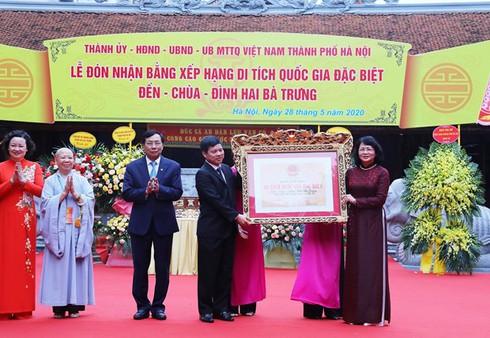Vice President Dang Thi Ngoc Thinh presented a certificate to local authorities in a ceremony at the site on May 28.
Apart from its special architecture, the temple houses statues of Trung Trac and Trung Nhi, who rebelled against the Eastern Han army early in the first century and together are known as “Hai Ba Trung” (the Trung Sisters), as well as six other female generals.
Valuable objects dating back to the Le Dynasty (1428-1788) and the Nguyen Dynasty (1802-1945) have also been preserved.
Next to the left of the temple is Vien Minh Pagoda, where an ancient stele made during the reign of Emperor Bao Dai in 1932 and other artifacts are kept.
Of note, the pagoda has also been recognised as a site that witnessed revolutionary events.
The Dong Nhan Communal House, meanwhile, worships Cao Son Dai Vuong, Quoc Vuong Thien Tu, Do Ho Dai Vuong, and other gods of water.
Speaking at the ceremony, Vice Chairman of the Hanoi People’s Committee Ngo Van Quy described the complex as a valuable cultural heritage that is part of the formation and development of Vietnam’s capital.
He urged Hai Ba Trung district to effectively manage the complex and map out a plan to attract tourists to the site, thus contributing to Hanoi’s socio-economic development.




